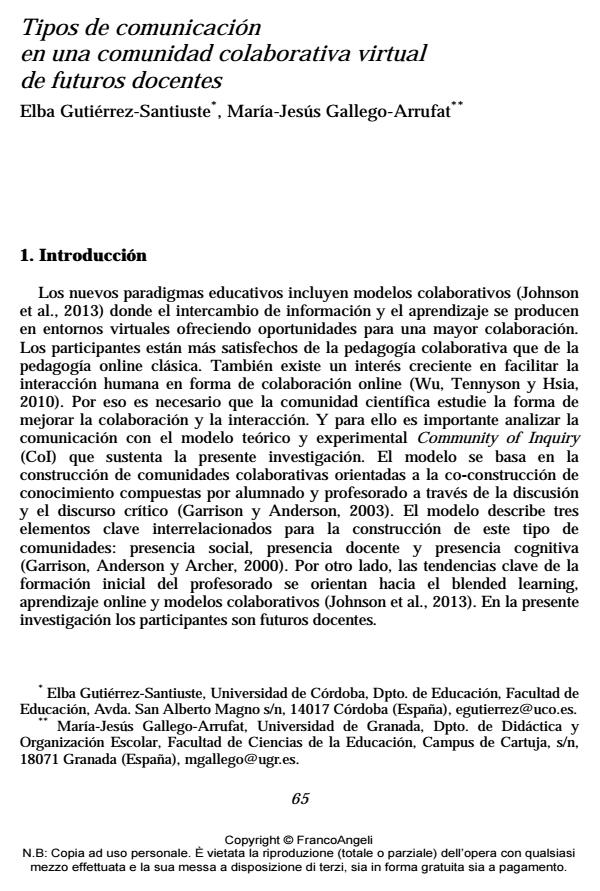Types of communication in a collaborative virtual community of pre-service teachers
Journal title CADMO
Author/s Elba Gutiérrez-Santiuste, María-Jesús Gallego-Arrufat
Publishing Year 2016 Issue 2015/2
Language Italian Pages 16 P. 65-80 File size 88 KB
DOI 10.3280/CAD2015-002007
DOI is like a bar code for intellectual property: to have more infomation
click here
Below, you can see the article first page
If you want to buy this article in PDF format, you can do it, following the instructions to buy download credits

FrancoAngeli is member of Publishers International Linking Association, Inc (PILA), a not-for-profit association which run the CrossRef service enabling links to and from online scholarly content.
Communication is studied in a virtual collaborative community of future teachers. The participants collaborate in a virtual learning environment in higher education. The main theme of this article is computer-mediated communication and the analysis of the three most used communication tools (chats, forums and emails). The different types of communication (social presence, cognitive presence, teaching presence) and the perception of the future teacher on them are exposed in the article. The results show differences in the elements analyzed for the communication tool which is used. The analysis of communication in virtual collaborative environments is a promising line of research to contribute improving the initial training of teachers and therefore improving education.
Keywords: Collaborative community of inquiry, computer-mediated communication, social presence, cognitive presence, teaching presence.
- Las competencias del profesorado de educación física. Un estudio del modelo formativo José Luis Aparicio-Herguedas, Jairo Rodríguez-Medina, Antonio Fraile-Aranda, in CADMO 2/2022 pp.21
DOI: 10.3280/CAD2021-002003
Elba Gutiérrez-Santiuste, María-Jesús Gallego-Arrufat, Tipos de comunicación en una comunidad colaborativa virtual de futuros docentes in "CADMO" 2/2015, pp 65-80, DOI: 10.3280/CAD2015-002007